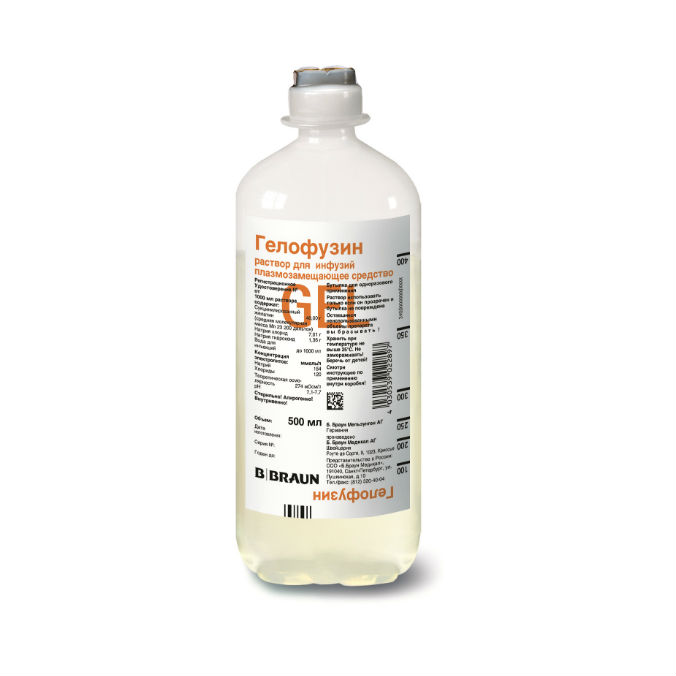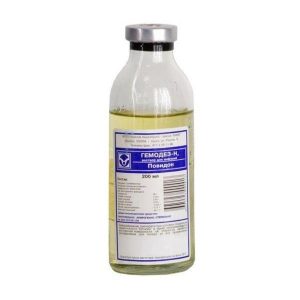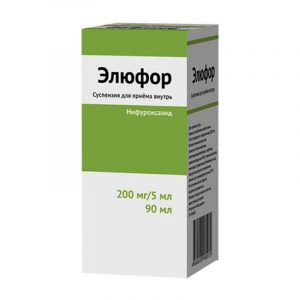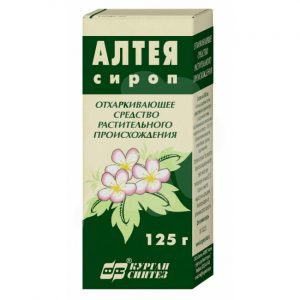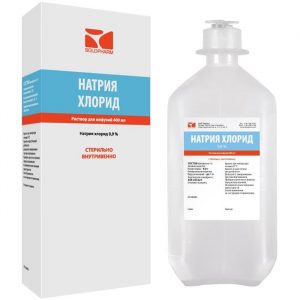Description
Release form
4% infusion solution
Packaging
500 ml – bottles (10) – packs of cardboard.
Contraindications
Hypervolemia, severe chronic heart failure, hypersensitivity to gelatin.
Caution should be used in case of hyperhydration, chronic renal failure, hemorrhagic diathesis, pulmonary edema, hypokalemia, hyponatremia.
Use in cases of impaired renal function
Use with caution in chronic renal failure.
Use in elderly patients
The degree of hematocrit reduction after drug administration should not exceed 25% in elderly patients
Special instructions
The introduction of gelatin can change the diagnostic test results for glucose, fructose, cholesterol, fatty acids, as well as ESR, specific gravity of urine, and indicators of protein in the urine (including the biuret method).
With the introduction of more than 2-3 liters of solution during the postoperative period during the operation, the concentration of protein in the blood serum should be monitored, especially in the presence of tissue edema (if necessary, the introduction of human albumin is advisable for further plasma replacement therapy).
Degree of hematocrit decrease after drug administration
With the introduction of more than 2-3 liters of solution during the postoperative period during the operation, the concentration of protein in the blood serum should be monitored, especially in the presence of tissue edema (if necessary, the introduction of human albumin is advisable for further plasma replacement therapy).
Degree of hematocrit decrease after drug administration
With the introduction of more than 2-3 liters of solution during the postoperative period during the operation, the concentration of protein in the blood serum should be monitored, especially in the presence of tissue edema (if necessary, the introduction of human albumin is advisable for further plasma replacement therapy).
Degree of hematocrit decrease after drug administrationshould not exceed 25% (in elderly patients, as well as in cardiovascular and pulmonary insufficiency – 30%).
In chronic heart failure, infusion is slow because of possible circulatory overload.
When used as an infusion under pressure (tonometer cuff, infusion pump), the solution must be warmed up to body temperature. When the drug is administered under pressure, all air from the vial should be removed first.
Composition of
1 l
gelatin 40 g
Dosage and administration of
The dosage regimen is set individually, taking into account the severity of plasma volume deficiency.
It is necessary to enter in / in a drip. The duration of the infusion and the volume of the injected solution are established taking into account the dynamics of heart rate, blood pressure, urine output, perfusion status of peripheral tissues.
In moderate blood loss and for prophylactic purposes, in the preoperative period or during surgery, they are administered in a dose of 0.5-1 l for 1-3 hours.
In the treatment of severe hypovolemia, 1-2 l.
In emergency, life-threatening situations, 500 ml is administered as a rapid infusion (under pressure), then after improving blood circulation, the infusion is carried out in an amount equivalent to volume deficiency.
To maintain bcc in shock, the infusion volume can reach 10-15 l / day.
Extracorporeal circulation requires 0.5-1.5 L of solution (depending on the system used).
Side effects
From the cardiovascular system: hypocoagulation caused by the dilution effect (with a large volume of infusion).
Allergic reactions: anaphylactoid reactions.
Drug Interactions
Pharmaceutically incompatible with fat emulsions, barbiturates, muscle relaxants, antibiotics, corticosteroids.
Compatible with electrolyte solutions, carbohydrates, whole blood preparations.
Overdose
Symptoms: hemodilution.
Treatment: withdrawal, symptomatic treatment.
Storage conditions
At a temperature not exceeding 25 ° C.
Keep out of the reach and sight of children.
Shelf life
5 years.
Do not use after the expiration date printed on the package.
Deystvuyushtee substance
Gelatin
Conditions of dispatch from
pharmacies prescription
